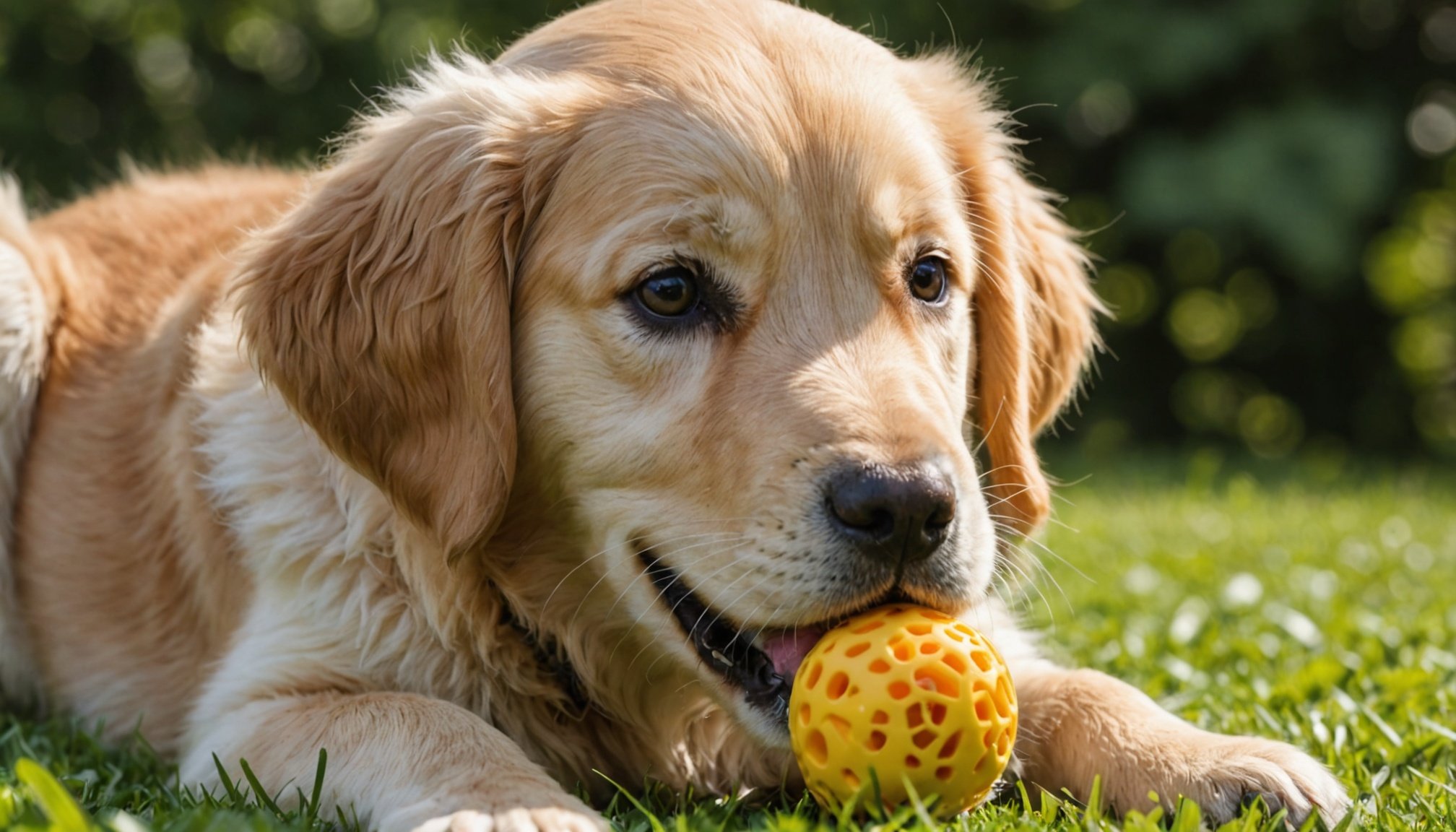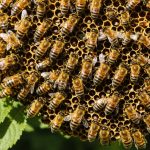Understanding the Teething Phase in Golden Retrievers
Golden Retrievers go through various puppy developmental stages, with teething being a crucial one. This stage can be challenging for both the puppy and the owner. During the teething phase, a golden retriever puppy experiences discomfort as their baby teeth start to fall out and adult teeth begin to emerge.
You might notice signs that your puppy is teething such as increased chewing behavior, irritability, and drooling. Puppies tend to chew more objects during this period as a way to alleviate the discomfort. Understanding these signs can help in managing your puppy effectively and ensuring a smoother transition.
A voir aussi : Revamping small spaces: essential tips to design a safe and stimulating environment for active australian shepherds
Effective management during this phase involves providing suitable chew toys to cater to their chewing behavior, which can help prevent them from chewing on household items. Recognizing that chewing is a natural part of the developmental stages of golden retrievers equips you to implement positive reinforcement techniques. Redirecting your puppy’s chewing to appropriate toys not only protects your belongings but also provides relief to their sore gums. Remember, patience and consistency are key in guiding your puppy through their teething phase while supporting their overall development.
Effective Training Techniques to Curb Chewing
When introducing puppy training methods, positive reinforcement stands out as a pivotal approach for tackling unwanted chewing. By rewarding good behaviour, puppies can be gently redirected towards choosing better activities. Offering treats, affection, or verbal praise as positive reinforcement helps them associate positive outcomes with desired behaviours. The key here is to stay consistent—ensuring that every desirable action is acknowledged reinforces its value.
A lire en complément : Nourishing your pregnant toy fox terrier: key insights for meeting her special dietary needs
Effective behavioral correction relies heavily on consistency in methods. This means setting clear expectations and maintaining these standards to guide your puppy. Consistency not only helps in forming habits but also in setting boundaries which your puppy understands. Align your entire family’s approach to create a stable framework for learning.
Incorporating specific commands is another technique to manage chewing tendencies. Simple commands like “leave it” or “drop” can be invaluable. Start by training with a treat, directly linking the command with an action and subsequent reward. Gradually, your puppy will respond effectively, learning to curb undesirable chewing. Utilizing a combination of these strategies will assist in managing and redirecting your puppy’s energy positively, ensuring a harmonious home environment.
Choosing the Right Chew Toys
Selecting the right chew toys for your puppy is essential, especially if you want to ensure they are safe and durable. The ideal chew toys for teething puppies should prioritize safety and durability to withstand those energetic gnaws. Look for toys made from non-toxic materials that won’t splinter or break apart easily. Size also plays a critical role; toys should be large enough to not be swallowed but small enough for your puppy to comfortably hold and chew.
For golden retrievers, durable toys such as rubber bones or tough rope toys offer excellent options. These robust items can endure the powerful bites of this breed while helping to clean teeth and soothe gums during the teething process. Texture is also paramount; varying textures can enhance the chewing experience for your puppy. Consider toys with ridges or nubs designed specifically to stimulate gums and promote oral health.
Safe toys for puppies should offer engaging play without the risk of harm. As you explore options, make informed decisions by observing what captures your puppy’s interest while ensuring it aligns with guidelines for durability and safety. This approach will keep your golden retriever both entertained and healthy.
Redirecting Chewing Behavior
Dealing with a puppy’s constant chewing can be challenging, but effective behavioral redirection can save your favourite shoes. Providing alternative chewing options is crucial. Offer a variety of chew toys, ensuring they are safe and enjoyable for your puppy. Having multiple options helps keep their interest, minimizing potential destruction of household items.
Interactive play is another engaging method that can shift focus from destructive to constructive chewing. Activities such as tug-play or hiding treats in puzzle toys not only keep their teeth busy but also stimulate their minds. These exercises allow puppies to burn off energy while learning what’s acceptable to chew. Remember, patience and enthusiasm during playtime can greatly bolster positive behavior in your pet.
Incorporate training sessions into play. When your puppy chooses an appropriate object over a forbidden one, reward them with praise or a treat. This positive reinforcement is integral to teaching your puppy the difference between right and wrong chewing targets. Consistency in these strategies ensures they become ingrained habits. As a result, it significantly mitigates excessive chewing, encouraging a healthy and enjoyable environment for both you and your furry friend.
Establishing Consistency in Chewing Management
Implementing a consistent routine is crucial when it comes to puppy management strategies. Training a puppy requires a routine that repeats the same actions, times, and expectations, which helps in establishing good habits. By sticking to a structured daily schedule, puppies quickly learn what is expected, reducing the likelihood of unwanted chewing behaviours.
Maintaining consistency can be challenging, especially when multiple caregivers or trainers are involved. To ensure everyone is on the same page, it is beneficial to create a shared plan that includes specific commands, approved toys, and set boundaries. This approach prevents confusion and allows the puppy to receive the same message regardless of who is in charge at any moment.
Patience and persistence are also essential components of successful training. While it may take time for puppies to fully grasp desired behaviours, staying patient fosters a supportive learning environment. Moreover, persistence in following through with established routines and training methods reinforces expectations and minimizes setbacks.
Overall, consistency is the backbone of effective puppy management strategies. By maintaining a reliable schedule and collaborating with others involved in training, puppy caregivers can achieve positive disciplinary results, ensuring a harmonious and chewing-free home.
Monitoring Health Implications of Excessive Chewing
Excessive chewing can have health impacts, potentially affecting both dental health and behavior. One of the primary concerns is dental wear or damage, resulting from persistent chewing. This may lead to issues like tooth fractures or gum problems. Behavioral issues may also surface; these can include anxiety or aggression, often stemming from the stress of persistent chewing. Recognising these signs is crucial. Watch for red flags such as changes in eating habits or visible tooth damage, which could indicate dental health issues.
Regular vet check-ups play a significant role in monitoring and maintaining dental health. Veterinarians can assess the condition of a pet’s teeth and gums, detecting potential problems early. This proactive approach allows for timely intervention, reducing the long-term health impacts. During vet visits, discuss any changes in chewing patterns or behavior to provide a comprehensive view of your pet’s health. Incorporating these check-ups into your routine can offer peace of mind, ensuring that dental issues or behavioral changes associated with chewing are addressed promptly. Prioritising these steps helps maintain a healthy, balanced lifestyle for pets prone to excessive chewing habits.
Engaging the Puppy Through Mental Stimulation
Puppies are naturally curious and energetic creatures. Mental stimulation plays a crucial role in their well-being and helps in reducing unwanted behaviours like excessive chewing. By keeping their minds occupied, we can guide them away from destructive habits.
One effective method is to incorporate cognitive development activities into their routine. Activities such as puzzle games, hide-and-seek, or even basic training sessions not only tire them out physically but also provide mental engagement. This approach strengthens their problem-solving skills while diverting their chewing instincts towards more productive tasks.
For those looking to invest in interactive solutions, consider some carefully selected interactive toys. These toys are designed to challenge a puppy’s mind. They often include hidden treats that require a bit of ingenuity to access or mechanisms that stimulate their hunting instincts. Such toys can keep a puppy entertained for hours, providing both chewing satisfaction and mental exercise.
Choosing activities or toys that align with your puppy’s interests cultivates a positive learning environment. This solution-oriented strategy not only fosters healthy habits but also strengthens the bond between you and your canine companion, making every moment together both playful and enriching.













